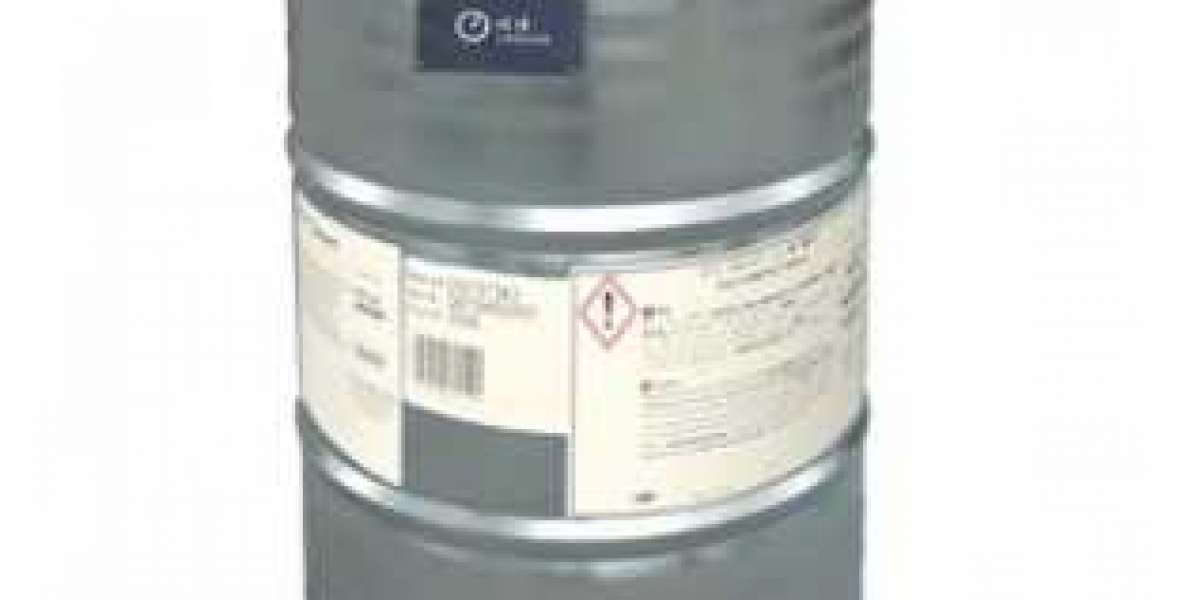Introduction to Isoparaffin
Welcome to our blog post on the fascinating world of isoparaffin and its significant role in the automotive industry. From fuel additives to lubricants, isoparaffin has become an essential component that drives innovation and efficiency in this ever-evolving sector. Whether you're a car enthusiast or simply curious about how technology shapes our driving experiences, join us as we delve into the advantages, applications, regulations, and future trends surrounding isoparaffin in automotive industries. So fasten your seatbelts and get ready for an exhilarating ride through the world of QIXl International Trade!
Advantages of Using Isoparaffin in Automotive Industries
Isoparaffin, a type of synthetic hydrocarbon solvent, offers several advantages when used in the automotive industry.
First and foremost, isoparaffin has excellent solvency power. This means it can effectively dissolve grease, oil, and other stubborn contaminants found in engine parts and components. By using isoparaffin as a cleaning agent, automotive manufacturers can ensure that their products are free from any impurities that could potentially affect performance.
Additionally, isoparaffin has a low toxicity level compared to conventional solvents such as mineral spirits or kerosene. As safety regulations become increasingly stringent in the automotive sector, using less harmful substances like isoparaffin can help companies comply with these requirements while still achieving optimal results.
Another advantage of utilizing isoparaffin in the automotive industry is its stability. It does not react with air or water and remains chemically inert even at high temperatures. This makes it suitable for various applications such as lubricants and heat transfer fluids.
Furthermore, isoparaffins have low volatility rates which allow for minimal evaporation during storage or use. This ensures that there will be no loss of product over time and provides long-lasting effectiveness.
Isoparaffins have a high flash point - the temperature at which they ignite when exposed to an open flame or spark. This property enhances safety during transportation and handling within the automotive manufacturing process.
In conclusion,isoparaffins offer numerous advantages for the automotive industry including superior solvency power,cleaner production processes,and enhanced safety measures.
Its stable nature,longevity,and health-friendly properties make it an ideal choice for various applications.
With ongoing advancements in technology,it's likely that we'll continue to see increased utilization of this versatile ingredient throughout all areas of vehicle production!
Applications of Isoparaffin in the Automotive Sector
Isoparaffin plays a vital role in various applications within the automotive industry. Its unique properties make it an ideal choice for different processes and products used in this sector.
One key application of isoparaffin is as a solvent. It is commonly used to clean automotive components such as engine parts, carburetors, and fuel injectors. The low odor and high evaporation rate of isoparaffin make it effective in removing grease, dirt, and contaminants without leaving any residue behind.
Another important use of isoparaffin is as a base fluid for lubricants. Due to its excellent thermal stability and low temperature performance, it can be blended with other additives to create high-quality motor oils that provide optimal protection to engines under varying conditions.
Additionally, isoparaffin finds its way into car care products such as polishes and waxes. Its ability to dissolve dirt particles while providing a glossy finish makes it an essential ingredient for these formulations.
Furthermore, the automotive sector also utilizes isoparaffins in manufacturing processes like paint production. Isoparaffins act as diluents or solvents for pigments and resins, enabling smooth application onto vehicles' surfaces while ensuring quick drying times.
The versatile nature of isoparaffin allows it to be utilized across multiple applications within the automotive industry. From cleaning agents to lubricants and even paint production – there's no denying its importance in keeping our cars running smoothly on the roads!
Types of Isoparaffin used in Automotive Industries
Isoparaffins, a type of synthetic hydrocarbon solvent, are widely used in the automotive industry for various purposes. These isoparaffins come in different types and grades, each with its own unique characteristics and applications.
One common type of isoparaffin used in the automotive sector is Isopropylparaben (IPP). It is known for its excellent solvency properties and low toxicity. IPP is commonly found in cleaning products used to remove grease and oil from automotive parts.
Another type of isoparaffin frequently utilized in the automotive industry is Isobutylparaben (IBP). IBP offers good compatibility with other ingredients and has a high flash point, making it an ideal choice for formulating brake fluids.
Isododecane, another popular variant of isoparaffin, finds application as a solvent or carrier fluid in car polishes and waxes. Its fast-drying nature allows for quick evaporation without leaving any residue on the vehicle's surface.
Additionally, Isohexadecane serves as an effective lubricant additive that enhances fuel efficiency by reducing friction between moving components within engines. This helps improve overall engine performance while also extending longevity.
These different types of isoparaffins play crucial roles across various aspects of the automotive industry. Whether it's cleaning agents, brake fluids, car care products or lubricants - their diverse properties make them valuable assets to manufacturers looking for efficient solutions.
As technology continues to advance and environmental concerns grow stronger within the automotive sector, we can expect further research and development into more sustainable alternatives that offer similar benefits as traditional isoparaffins. The future holds exciting possibilities for greener solutions without compromising performance or safety standards!
Regulatory Considerations and Safety Concerns
When it comes to using isoparaffin in the automotive industry, regulatory considerations and safety concerns play a crucial role. As with any chemical substance, there are certain guidelines and regulations that need to be followed to ensure the safe use of isoparaffin.
One important aspect is the proper labeling of products containing isoparaffin. This helps users identify the presence of this chemical and take necessary precautions while handling or storing these products. Additionally, manufacturers must comply with safety data sheet requirements which provide detailed information about potential hazards, handling procedures, and emergency measures.
Another crucial consideration is the disposal of waste materials containing isoparaffin. It's essential to adhere to local regulations regarding waste management practices to prevent environmental contamination.
Safety concerns also arise when considering exposure risks for workers who handle or come into contact with isoparaffin during its production or application processes. Implementing appropriate personal protective equipment (PPE) such as gloves, goggles, and masks can help minimize these risks.
To address these concerns, regulatory bodies like the Occupational Safety and Health Administration (OSHA) have set permissible exposure limits (PELs) for certain types of isoparaffins used in various industries including automotive manufacturing. These limits help safeguard workers from excessive exposure levels that could potentially harm their health.
By adhering to these regulations and implementing safety measures at every step of the process – from production through disposal – automotive companies can minimize any potential risks associated with using isoparaffin while maximizing its benefits as an effective solution in their operations.
In conclusion, Regulatory considerations and safety concerns are pivotal aspects when it comes to utilizing isoparaffins in the automotive industry. By following proper labeling protocols, complying with safety data sheet requirements, ensuring correct waste disposal methods are implemented, providing appropriate PPE for workers' protection against exposure risks, and adhering to permissible exposure limits, companies can ensure the safe and responsible use of isopar
Future Outlook and Trends for Isoparaffin in Automotive Industries
As the automotive industry continues to evolve, so does the demand for innovative solutions that can improve performance, efficiency, and sustainability. Isoparaffin, with its unique properties and versatility, is poised to play a significant role in shaping the future of this sector.
One of the major trends driving the adoption of isoparaffin in automotive industries is the growing emphasis on environmental sustainability. Isoparaffin offers a cleaner alternative to conventional solvents by reducing emissions and minimizing harmful effects on air quality. With stricter regulations being implemented globally, automakers are increasingly turning towards eco-friendly solutions like isoparaffins to meet these requirements.
Another trend that will shape the future of isoparaffins in automotive industries is their use as lubricants. The exceptional thermal stability and low volatility make them ideal for use in engine oils, transmission fluids, and other lubricating applications. As vehicles become more advanced with higher operating temperatures and increased power demands, there will be a greater need for high-performance lubricants like those based on isoparaffins.
Moreover, as electric vehicles gain traction in the market, there will be an increased focus on battery technologies. Isoparaffins have shown promising potential as electrolyte additives due to their excellent compatibility with lithium-ion batteries. These additives can enhance battery performance by improving stability and preventing degradation over time.
Additionally, lightweighting has become a crucial aspect of automotive design as manufacturers strive to improve fuel efficiency without compromising safety or performance. Isoparaffin-based materials offer an attractive solution due to their low viscosity and high flash points which enable easier processing while maintaining structural integrity.
In conclusion, the future outlook for isoparaffin in automotive industries seems bright indeed. With its numerous advantages such as improved environmental sustainability, enhanced lubrication capabilities, potential applications in battery technology, and suitability for lightweighting, isoparaffin is set to play a vital role in shaping
Conclusion
It is evident that Isoparaffin plays a significant role in the automotive industry. Its unique properties and advantages make it an ideal choice for various applications. From lubricants to cleaning agents, Isoparaffin offers excellent performance and safety.
As automotive manufacturers strive for efficiency and sustainability, the demand for Isoparaffin is expected to grow further in the coming years. With increasing regulations on emissions and environmental impact, this versatile solvent will continue to be a preferred solution.
However, it is essential to consider regulatory considerations and safety concerns associated with using Isoparaffin. Adhering to proper handling procedures and following recommended guidelines ensures safe usage of this chemical compound.
As technology advances and new developments arise in the automotive sector, we can expect even more innovative uses of Isoparaffin. Its exceptional capabilities are sure to contribute significantly to enhancing vehicle performance while minimizing environmental impact.
So whether you're working within the automotive industry or simply interested in understanding how chemicals like Isoparaffin play a vital role behind-the-scenes, exploring its applications and relevance opens up exciting possibilities for sustainable transportation solutions.
Remember QIXl International Trade when considering your options!








